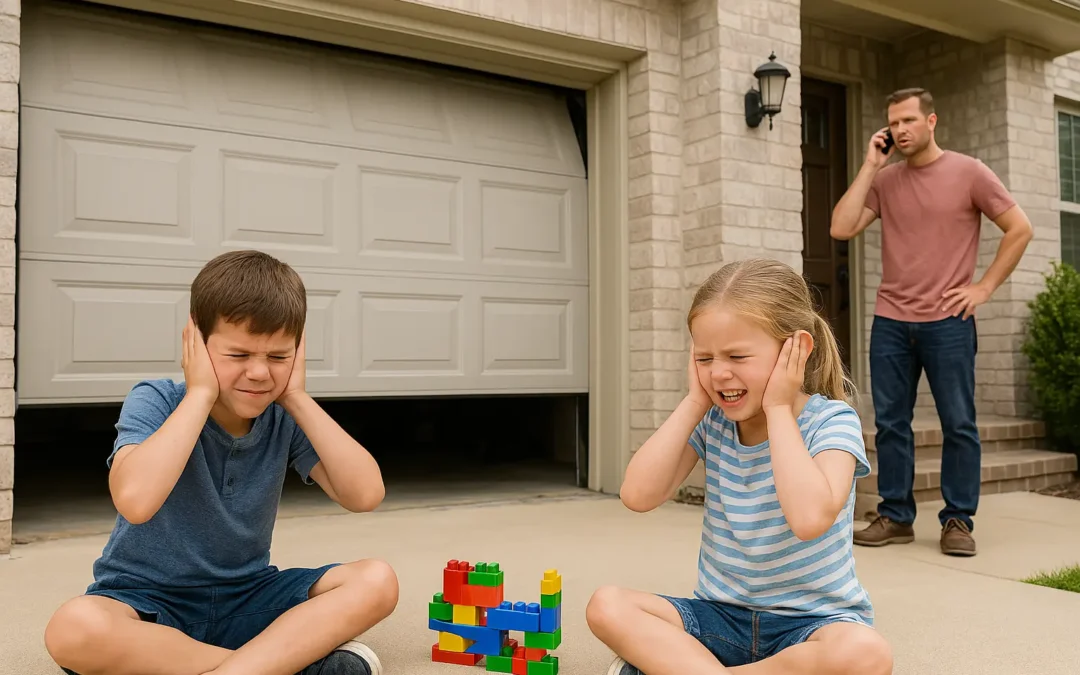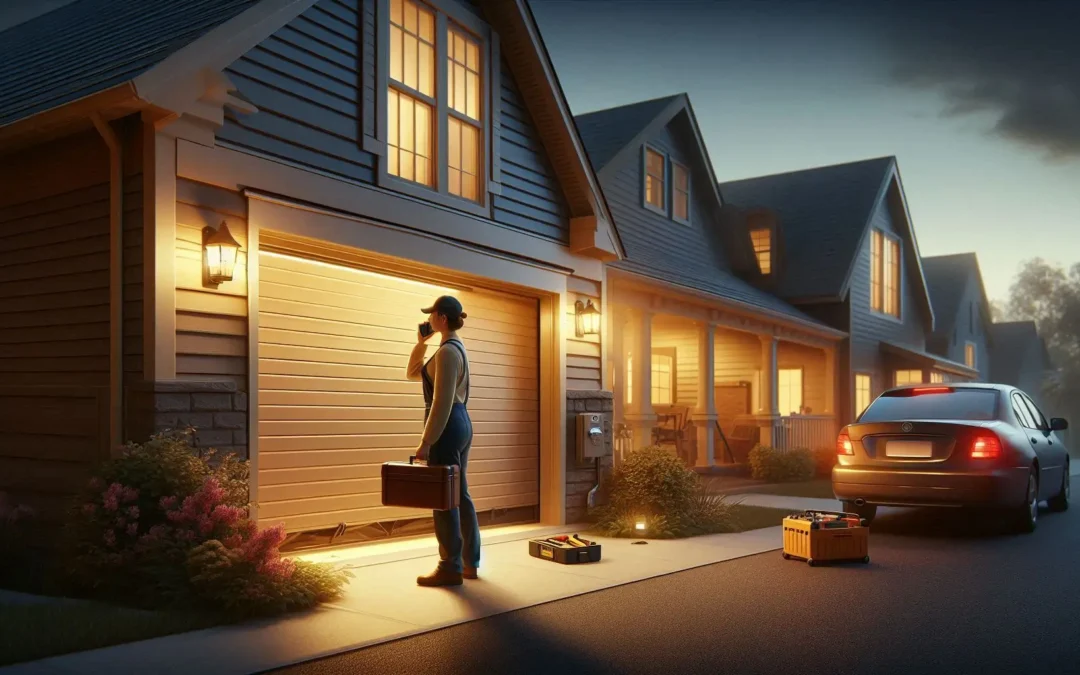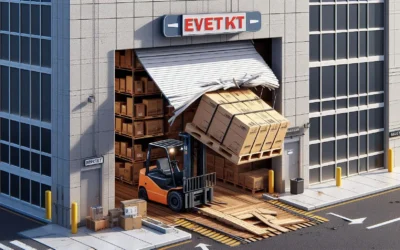Today we will address the most common repairs for rolling steel doors and how to fix them, ensuring that your garage remains safe and operational. We will explore issues such as blade wear, broken drive belts, motor failures, and misaligned guides, providing practical solutions and preventive maintenance tips. While this article may be useful, we always recommend that if you lack the necessary knowledge, you seek our rolling steel doors repair service, with specialist technicians who will solve the problem with quality service, thus avoiding more serious breakdowns.
What are the most common breakdowns in garage rolling steel doors?
Blade Wear in rolling steel doors
Identifying the Problem
Blade wear is one of the most frequent breakdowns in garage rolling steel doors. Blades can deform, crack, or corrode due to constant use and exposure to harsh weather conditions. This wear can make it difficult to close the garage completely and securely.
Practical Solutions
Replacement of Worn Blades: Identifying and replacing damaged blades is crucial. It is advisable to have spare blades compatible with your rolling steel doors model.
Step by Step:
- Removing Damaged Blades
- : Use appropriate tools to remove damaged blades without affecting adjacent parts.
- Installing New Blades: Ensure the new blades fit perfectly and slide smoothly.
- Function Test: After replacement, test the rolling steel doors to ensure it opens and closes correctly.
- Regular Maintenance: To reduce wear, it is important to clean the blades periodically and apply suitable lubricant.
Step by Step: - Cleaning the Blades: Use a damp cloth to remove dust and dirt.
- Applying Lubricant: Apply silicone lubricant to moving parts to facilitate movement and reduce wear.
Broken Drive Belt
Identifying the Problem
The drive belt is essential for the operation of a rolling steel doors. If it breaks, the rolling steel doors may become inoperable, leaving the garage vulnerable.
Practical Solutions
Periodic Inspection: Regular inspections can help identify signs of wear in the belt before it breaks.
Step by Step:
- Visual Inspection: Look for signs of wear, such as cracks or fraying.
- Belt Tension: Ensure the belt is properly tensioned.
- Belt Replacement: It is essential to have a spare belt and understand the replacement process.
Step by Step: - Removing the Broken Belt: Carefully remove the damaged belt.
- Installing the New Belt: Install the new belt ensuring it is properly aligned and tensioned.
- Function Test: Verify that the rolling steel doors moves smoothly with the new belt.
Motor Failures in Your Garage Rolling steel doors
Identifying the Problem
The motor is the heart of the rolling steel doors system. Motor failures can be due to overheating, internal component wear, or electrical problems, which can prevent the rolling steel doors from operating correctly.
Practical Solutions
Motor Maintenance: Regular maintenance can prevent many common issues.
Step by Step:
- Cleaning the Motor: Remove dust and dirt from the motor and its surroundings.
- Lubrication: Apply lubricant to the motor’s moving parts according to the manufacturer’s recommendations.
- Diagnosis and Repair: Having a trained technician diagnose and repair motor failures is crucial.
Step by Step: - Initial Diagnosis: A technician will inspect the motor to identify the problem.
- Parts Replacement: If necessary, the technician will replace faulty parts.
- Function Test: After repair, the motor will be tested to ensure proper operation.
Misalignment of Guides
Identifying the Problem
Misalignment of the guides can cause the rolling steel doors to move irregularly or get stuck. This can increase wear on the blades and other components.
Practical Solutions
Adjusting the Guides: Properly aligning the guides can resolve movement issues and reduce wear.
Step by Step:
- Guide Inspection: Check that the guides are aligned and free of obstructions.
- Alignment Adjustment: Use appropriate tools to adjust the guides until they are correctly aligned.
- Movement Test: Ensure the rolling steel doors moves smoothly along the adjusted guides.
- Regular Inspection: Periodically review the guides and make adjustments as needed to prevent major problems.
Step by Step: - Visual Review: Look for signs of wear or misalignment.
- Preventive Maintenance: Apply lubricant to the guides to reduce friction and wear.
Manual Opening System Problems
Identifying the Problem
Manual opening systems in rolling steel doors can fail due to internal mechanism wear, dirt buildup, or lack of lubrication.
Practical Solutions
Manual System Maintenance: Regular maintenance can ensure smooth operation and prevent problems.
Step by Step:
- Visual Inspection: Check that the manual opening system does not have worn or damaged components.
- Cleaning: Clean the components to remove dust and dirt.
- Lubrication: Apply lubricant to the moving points to facilitate operation.
- Component Replacement: If you identify worn components, replace them to ensure the system functions correctly.
Step by Step: - Identifying Worn Components: Inspect the manual opening system and detect parts that need replacement.
- Disassembly and Replacement: Remove worn parts and replace them with new ones, ensuring correct installation.
- Function Test: Ensure the manual opening system works smoothly after replacement.
Electrical Problems in Automatic Rolling Steel Doors
Identifying the Problem
Automatic rolling steel doors may present electrical problems that affect their operation, such as control system failures, short circuits, or loose connections.
Practical Solutions
Electrical System Inspection: Regular inspections of the electrical system can help identify and resolve issues before they cause severe failures.
Step by Step:
- Connection Check: Verify that all electrical connections are secure and not showing signs of wear.
- Cable Inspection: Examine cables for wear or damage.
- Control System Test: Ensure the control system operates correctly and has no errors.
- Electrical Fault Repair: If electrical problems are found, it is advisable to have a specialized technician carry out necessary repairs.
Step by Step: - Problem Diagnosis: A specialized technician will review the electrical system to identify the issue.
- Component Repair or Replacement: The technician will repair or replace damaged components.
- Function Test: After repair, the electrical system will be tested to ensure proper operation.
Security Sensor Problems
Identifying the Problem
Automatic rolling steel doors usually have safety sensors to prevent accidents. If these sensors fail, the rolling steel doors may not stop when encountering an obstacle, which can be dangerous.
Practical Solutions
Sensor Maintenance: Keeping sensors clean and properly aligned can prevent malfunctions.
Step by Step:
- Sensor Cleaning: Regularly clean the sensors to ensure they are not obstructed by dust or dirt.
- Sensor Alignment: Check that sensors are well-aligned and in the correct position.
- Function Test: Ensure sensors correctly detect obstacles and stop the rolling steel doors.
- Faulty Sensor Replacement: If a safety sensor is not working properly, replace it to ensure system safety.
Step by Step: - Identifying Faulty Sensors: Inspect the sensors and detect those that are not working correctly.
- Disassembly and Replacement: Remove defective sensors and replace them with new ones, ensuring correct installation.
- Function Test: Ensure new sensors work correctly and stop the rolling steel doors when encountering an obstacle.
End Stops Problems
Identifying the Problem
End stops are components that determine the opening and closing points of the rolling steel doors. If these stops fail, the rolling steel doors may not stop in the correct positions, causing potential damage.
Practical Solutions
Adjusting End Stops: Properly adjusting the end stops can solve positioning problems of the rolling steel doors.
Step by Step:
- End Stop Inspection: Check that end stops are correctly installed and not damaged.
- Position Adjustment: Adjust the end stops to ensure the rolling steel doors stops in the correct positions.
- Function Test: Ensure the rolling steel doors stops in the desired positions after adjustment.
- Defective Stop Replacement: If the end stops are damaged or not functioning correctly, replace them to ensure the correct operation of the rolling steel doors.
Step by Step: - Identifying Defective Stops: Inspect the end stops and detect those that need replacement.
- Disassembly and Replacement: Remove defective stops and replace them with new ones, ensuring correct installation.
- Function Test: Ensure new stops work correctly and stop the rolling steel doors in the desired positions.
Final Summary
Maintenance and repair of garage rolling steel doors are essential for ensuring their efficient operation and extending their lifespan. Identifying and addressing common issues such as blade wear, drive belt failure, motor problems, and guide misalignment can prevent costly disruptions and maintain garage security. Regular inspections, using the right lubricants, and having trained personnel are key to effective maintenance.
Frequently Asked Questions
What type of lubricant is best for rolling steel doors?
Silicone lubricant is generally the most suitable for rolling steel doors due to its ability to reduce friction without attracting dust and dirt. However, it is always best to follow the manufacturer’s recommendations to ensure the most appropriate product is used.
What are the basic steps to adjust the guides of a rolling steel doors?
To adjust the guides, first inspect them visually for any misalignment or obstructions. Then, use appropriate tools to make necessary adjustments, ensuring the guides are correctly aligned and free of obstructions. Finally, test the rolling steel doors movement to ensure it moves smoothly.
What should I do if the motor of my rolling steel doors starts making strange noises?
If the motor of your rolling steel doors begins making strange noises, it may indicate internal problems or wear. Turn off the motor and contact a specialized technician for inspection and diagnosis. Continuing to use the motor under these conditions may cause further damage.
Is it possible to perform minor repairs without professional help?
Yes, it is possible to carry out some minor repairs without professional help, such as replacing worn blades or adjusting guides. However, for more complex issues, such as motor failures or drive belt issues, it is advisable to seek the assistance of a specialized technician to avoid further damage and ensure a safe and effective repair.
How does weather affect the wear of a rolling steel doors?
Weather can significantly impact the wear of a rolling steel doors. Extreme weather conditions, such as high humidity, very low or high temperatures, and constant exposure to rain or sunlight, can accelerate the wear of blades, drive belts, and other components. Regular maintenance and using weather-resistant materials can help mitigate these effects.
What is the typical lifespan of a well-maintained rolling steel doors?
The lifespan of a well-maintained rolling steel doors can vary depending on usage and environmental conditions but generally ranges between 10 to 15 years. Regular inspections and proper maintenance can help extend its lifespan.
If you need professional assistance with the maintenance or repair of your garage rolling steel doors, do not hesitate to contact us, TAC Overhead Door in Houston. Our team of experts is ready to provide quick and effective solutions.








